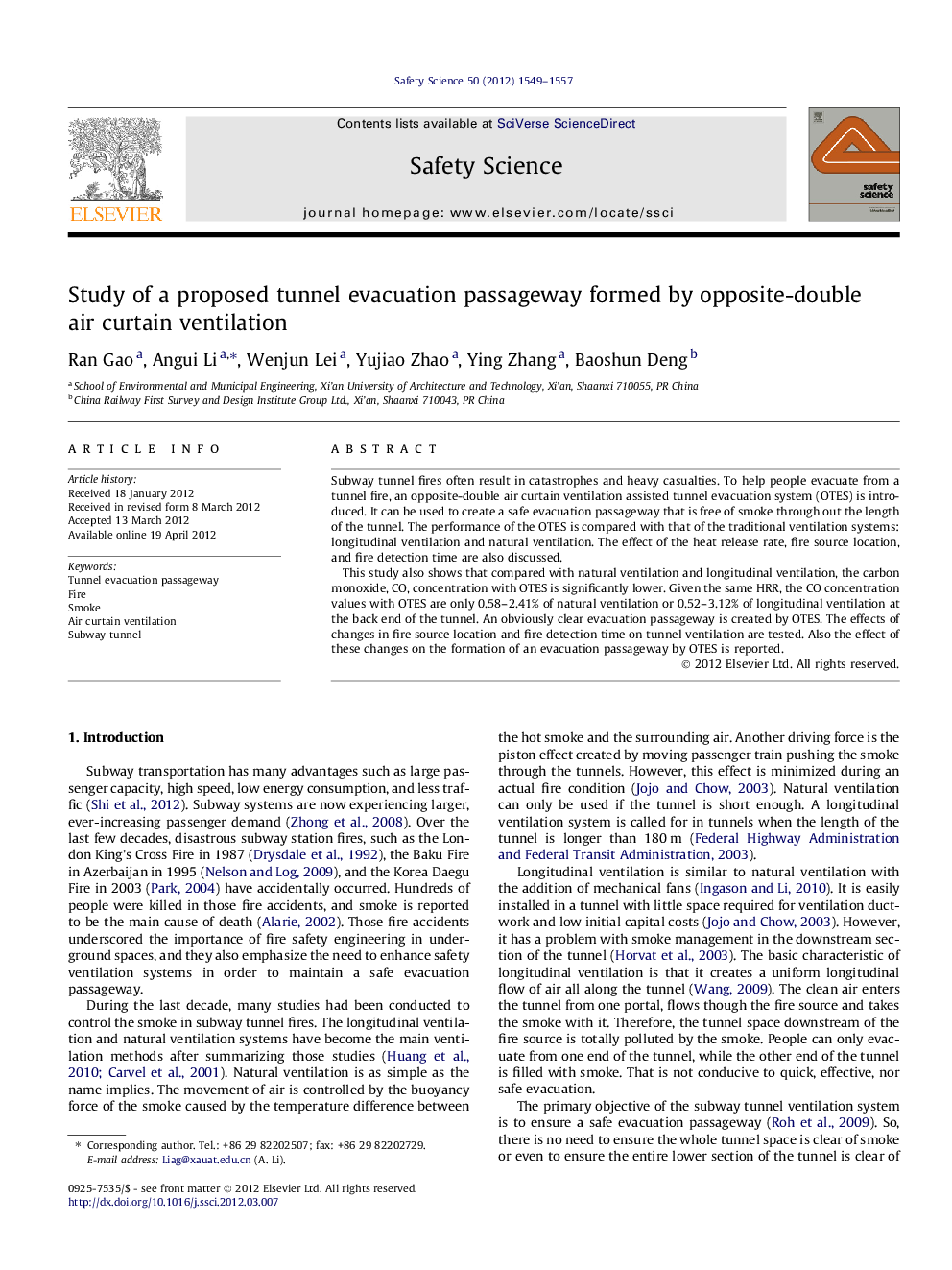| Article ID | Journal | Published Year | Pages | File Type |
|---|---|---|---|---|
| 589286 | Safety Science | 2012 | 9 Pages |
Subway tunnel fires often result in catastrophes and heavy casualties. To help people evacuate from a tunnel fire, an opposite-double air curtain ventilation assisted tunnel evacuation system (OTES) is introduced. It can be used to create a safe evacuation passageway that is free of smoke through out the length of the tunnel. The performance of the OTES is compared with that of the traditional ventilation systems: longitudinal ventilation and natural ventilation. The effect of the heat release rate, fire source location, and fire detection time are also discussed.This study also shows that compared with natural ventilation and longitudinal ventilation, the carbon monoxide, CO, concentration with OTES is significantly lower. Given the same HRR, the CO concentration values with OTES are only 0.58–2.41% of natural ventilation or 0.52–3.12% of longitudinal ventilation at the back end of the tunnel. An obviously clear evacuation passageway is created by OTES. The effects of changes in fire source location and fire detection time on tunnel ventilation are tested. Also the effect of these changes on the formation of an evacuation passageway by OTES is reported.
► A novel evacuation passageway used in subway tunnel is introduced. ► It can be used to create a safe, smoke-free evacuation passageway out of the tunnel. ► It brings a new perspective to the field of the smoke control in subway station under fire cases.
